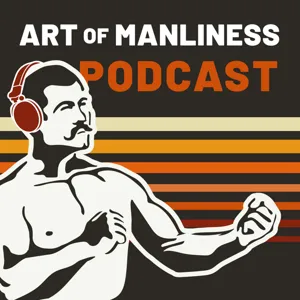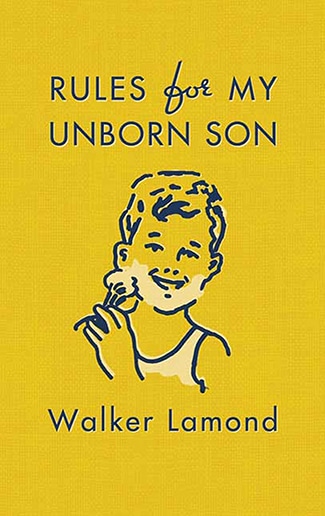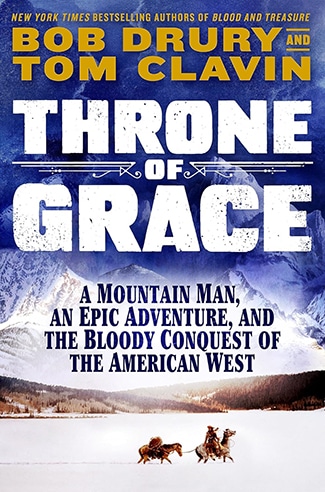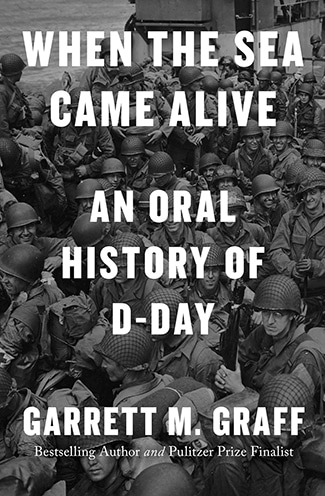Podcast Summary
The Modern Christmas: A Cultural Phenomenon: Christmas was a small religious observance before the 19th century, but became a cultural phenomenon due to German immigrants, mass production, and consumer culture, making it a national holiday in the US in 1870.
Christmas as we know it today, with its beloved traditions and cultural significance, is actually a relatively recent development. In the western world before the nineteenth century, Christmas was a small religious observance, with the date and even the celebration of Christ's birth being uncertain. It wasn't until Christmas shifted from a religious to a cultural celebration that it gained widespread popularity. In the United States, for instance, Christmas wasn't a national holiday until 1870, nearly 100 years after the signing of the Declaration of Independence. Many factors contributed to the rise of Christmas as a cultural phenomenon, including the influx of German immigrants and their Christmas traditions, the emergence of mass production, and the spread of consumer culture. So the next time you decorate your tree, sing carols, or enjoy a slice of fruitcake, remember that these traditions have a rich and fascinating history that is much more recent than you might think.
The Evolution of Christmas: From Homecoming to Family Festivity: Christmas transformed from a longing for home and simple celebrations to a domestic, middle-class holiday with new traditions.
The celebration of Christmas has undergone significant transformations throughout history. Initially, it was a time when people longed to be at home with their families but couldn't afford a feast or extravagant gifts due to financial constraints. In some places, Christmas was even banned, and its observance varied greatly. Over time, the holiday evolved, becoming more domesticated and focused on family gatherings in the home. However, in other regions, it was a time for community celebrations and public festivities. The Victorian era marked a turning point, as Christmas transitioned into a domestic, middle-class holiday, complete with new traditions like sending Christmas cards and exchanging gifts. This shift was influenced by factors such as advances in transportation, the rise of literacy rates, and the growth of industrialization.
The Role of Print Media in Shaping Christmas Traditions: During the late 1800s and early 1900s, print media significantly influenced how Christmas was perceived and celebrated in the West by spreading ideas and creating a shared understanding of traditions through influential works like 'A Christmas Carol' and 'The Night Before Christmas'.
The explosion of print media during the late 19th and early 20th century played a significant role in shaping and unifying the way people in the West understood and celebrated Christmas. This period saw a proliferation of newspapers, allowing for efficient communication and the spread of ideas. Authors like Charles Dickens and Clement Clarke Moore contributed to this process with influential works like "A Christmas Carol" and "The Night Before Christmas," which presented a domestic, family-oriented image of Christmas and helped establish the modern-day Santa Claus. These literary works, originating in Victorian England and then spreading to America and back, played a crucial role in creating a shared understanding of Christmas traditions and values.
From St. Nicholas to Santa Claus: A Cultural Evolution: St. Nicholas, a protector figure, transformed into Santa Claus, a jolly gift-giver, through centuries of cultural influences and artistic interpretations.
St. Nicholas, a legendary religious figure known for his generosity and miracles, evolved over centuries into the modern-day Santa Claus. Initially, St. Nicholas was a protector for seafarers, brewers, and pawnbrokers, and the tradition of gift-giving in his name began in the Middle Ages. During the Protestant Reformation, St. Nicholas was reconnected with Christmas to preserve his popularity. The Dutch legend of Sinterklaas also influenced the development of Santa Claus. However, it wasn't until the mid-19th century, with the help of artists and media, that Santa Claus took on the familiar appearance we know today – a jolly, rotund man in red suit with reindeer. The transformation from St. Nicholas to Santa Claus was a gradual process marked by various cultural influences and artistic interpretations.
The origins of Christmas traditions: Many Christmas traditions, like Santa Claus and Rudolph, have recent origins and were influenced by religious, folkloric, and commercial factors, with print media playing a significant role in their popularization.
Many of our beloved Christmas traditions, including the image of Santa Claus and the story of Rudolph the Red-Nosed Reindeer, have relatively recent origins and came about through a combination of religious, folkloric, and commercial influences. The print media, particularly advertising, played a significant role in shaping and popularizing these traditions. For instance, Coca-Cola's marketing efforts in the 1930s helped solidify the modern image of Santa Claus, while the Montgomery Ward department store's decision to produce an in-house Christmas story in 1939 led to the creation of Rudolph. These examples illustrate how seemingly insignificant decisions and chance occurrences have shaped the way we celebrate Christmas today.
Rudolph's origins and the Christmas tree's history: Rudolph's creation by Robert May was inspired by Montgomery Ward, while the Christmas tree's decoration stems from ancient practices and tree veneration.
The Christmas tradition of Rudolph the Red-nosed Reindeer might never have existed if Montgomery Ward hadn't given the rights to the character to Robert May in the 1930s. May then went on to create the beloved song and animated special, making Rudolph a Christmas legend. On a different note, the tradition of decorating a Christmas tree is rooted in ancient practices of bringing evergreens into the home during winter to ward off evil and bring good luck. Additionally, many pre-Christian cultures practiced tree veneration, believing that trees contained spirits and were even associated with gods. These historical influences combined to create the unique and cherished Christmas traditions we know today.
European winter traditions and the origin of the Christmas tree: The Christmas tree tradition originated from ancient European practices, gained popularity through German royalty, and symbolizes wealth and status.
The Christmas tree tradition originated from ancient European practices, specifically the use of evergreen trees and decorations during winter festivities. The adoption of the Christmas tree as a Christian symbol is linked to the Protestant Reformation, with Martin Luther suggesting the use of a fir tree as a neutral symbol for Christmas celebrations. The tradition gained popularity through the influence of German royalty, particularly Queen Victoria and Prince Albert, and the availability of commercially grown trees and artificial alternatives in the late 19th century. Decorating the tree has roots in various historical practices, such as paradise plays and rag trees. The Christmas tree became a symbol of wealth and status, and its popularity spread across Europe and the Atlantic with the help of royal marriages and media representation.
From candles to electric lights: The evolution of Christmas trees: The Christmas tree tradition has evolved from using candles to electric lights, making it safer and more accessible, but fewer people are putting up trees according to recent studies. Beloved Christmas songs like 'Silent Night' have interesting origins and the tradition continues to evolve with new trends on social media.
The evolution of Christmas trees from candles to electric lights played a significant role in making the tradition more accessible and safer for the average person. However, the tradition of putting up a Christmas tree is declining, with fewer people doing so according to a 2013 study by the Pew Research Center. The origin of beloved Christmas songs like "Silent Night" also involves interesting stories, such as the organ breaking down at a small chapel in Vienna, leading to the composition of the carol without musical accompaniment. The tradition of Christmas music continues to evolve with new trends emerging on social media. Overall, the Christmas tree and music traditions continue to hold importance for many, despite some changes and declines in their popularity.
A humble beginning for a Christmas classic: Joseph Mohr sought Franz Gruber's help to create a Nativity song for Christmas Eve in 1818. Due to organ troubles, a guitar provided the music, and word of mouth spread its popularity.
"Silent Night," the most recorded Christmas song in history, originated from a humble beginning. Joseph Mohr approached Franz Gruber for help in creating a Nativity story-based song for Christmas Eve in 1818. Due to a malfunctioning organ, the musical accompaniment had to come from a guitar, which was not the typical instrument used for such occasions. The song spread through word of mouth, with traveling organ repairmen and folk musicians playing a significant role in its dissemination. Despite its humble origins, "Silent Night" became a classic, inspiring generations of musicians and remaining a beloved Christmas carol.
Fruitcake: A Rich History and Christmas Tradition: Fruitcake, originally a luxurious and indulgent food, has a rich history dating back to medieval times and has been a significant part of Christmas traditions for centuries. Despite negative associations, it remains a popular holiday treat.
Despite the jokes and criticisms, fruitcake has a rich history and has been a significant part of Christmas traditions for centuries. Originally, fruitcake was a dense, moist, and portable cake made with dried fruits and, during medieval times, often soaked in alcohol. It was considered a luxurious and indulgent food, and was served at special occasions including weddings and Christmas time. Queen Victoria famously kept a slice of her wedding fruitcake, and even George Washington received one. However, it was during the late 19th and early 20th centuries that fruitcake became almost exclusively associated with Christmas and mass-produced, leading to its negative reputation. Despite the jokes, fruitcake remains a popular holiday treat and continues to be a staple of Christmas culture.
The influence of culture and history on holiday foods: Despite popular belief, fruitcake isn't universally disliked and roasting chestnuts was once a beloved holiday tradition, but their perceptions have been shaped by cultural references and historical events.
The popularity and perception of certain holiday foods, like fruitcake and chestnuts, have been shaped by cultural references and historical events. For instance, the negative association with fruitcake began in the 1980s when it entered popular culture as a joke, despite the fact that many people have never tried a good one. Similarly, the image of roasting chestnuts on an open fire during Christmas is deeply ingrained in our music and culture, but the tradition of actually roasting and consuming chestnuts has largely died out due to a fungal blight in the early 20th century. These examples illustrate how commerce, industrialization, and cultural references have influenced the way we perceive and celebrate holiday traditions. While some argue that Christmas has become too commercial, it's important to remember that it has always been a gift-giving holiday, and we have the power to choose how commercially we want to participate in the holiday.
Nostalgic Ads and New Traditions: From blurred lines between Christmas ads and entertainment in the 70s and 80s to new traditions like Elf on the Shelf and family pajamas, Christmas stories and experiences continue to evolve.
The line between Christmas entertainment and commercials has blurred in the past, creating iconic ads that evoke strong feelings of nostalgia. Commercials from the 70s and 80s, like those for Fruity Pebbles, Ronald McDonald, and Norelco Razors, were indistinguishable from cartoons and shows, making it hard for children to differentiate between ads and content. As for new traditions, the Elf on the Shelf is a potential candidate, with the potential to be passed down from generation to generation. Additionally, Christmas romances have become a dominant theme in Christmas movies and news, creating a new era of Christmas storytelling. Lastly, the trend of families wearing matching pajamas, or fam jams, has emerged in the last decade, fueled by commerce and social media. Whether these new traditions will stand the test of time remains to be seen.
Christmas Traditions Evolving: New practices like Christmas Eve boxes emerge, while caroling and tree cutting decline. Creating new traditions and focusing on family can help maintain holiday joy.
Christmas traditions are evolving, with new practices like Christmas Eve boxes becoming popular, while others, such as caroling and cutting down one's own tree, are declining. A personal anecdote shared involves the experience of the Elf on the Shelf tradition, which was criticized for being annoying and intrusive. The speaker also expressed a preference for creating new traditions, such as the Christmas goose, which leaves a daily ornament in the tree. The discussion also touched upon the declining attendance at church during Christmas and the general shift in the meaning of Christmas as people grow older. For those struggling to maintain the holiday spirit, the speaker suggested that creating new traditions and focusing on nostalgia and family could help rekindle the joy of the season.
Trying new things and giving back during the holiday season: Engage in new experiences, connect with people, and give back to your community during the holiday season for a meaningful and special experience.
To keep the holiday season fresh and meaningful, it's essential to introduce new experiences and traditions. Brian Earl, the author of "Christmas Past," emphasizes the importance of trying new things and giving to charity. He shares his experience of sponsoring a family through Boston Cares and delivering care packages. The convenience of online shopping has freed up time, but it's crucial to use that time wisely by engaging in new experiences and connecting with people. Earl also encourages listeners to check out his book and podcast for more insights into the history and meaning of Christmas. In conclusion, to make each holiday season special, try something new, connect with others, and give back to your community. For more information, visit Christmaspastpodcast.com.













 Key Points:
Key Points: